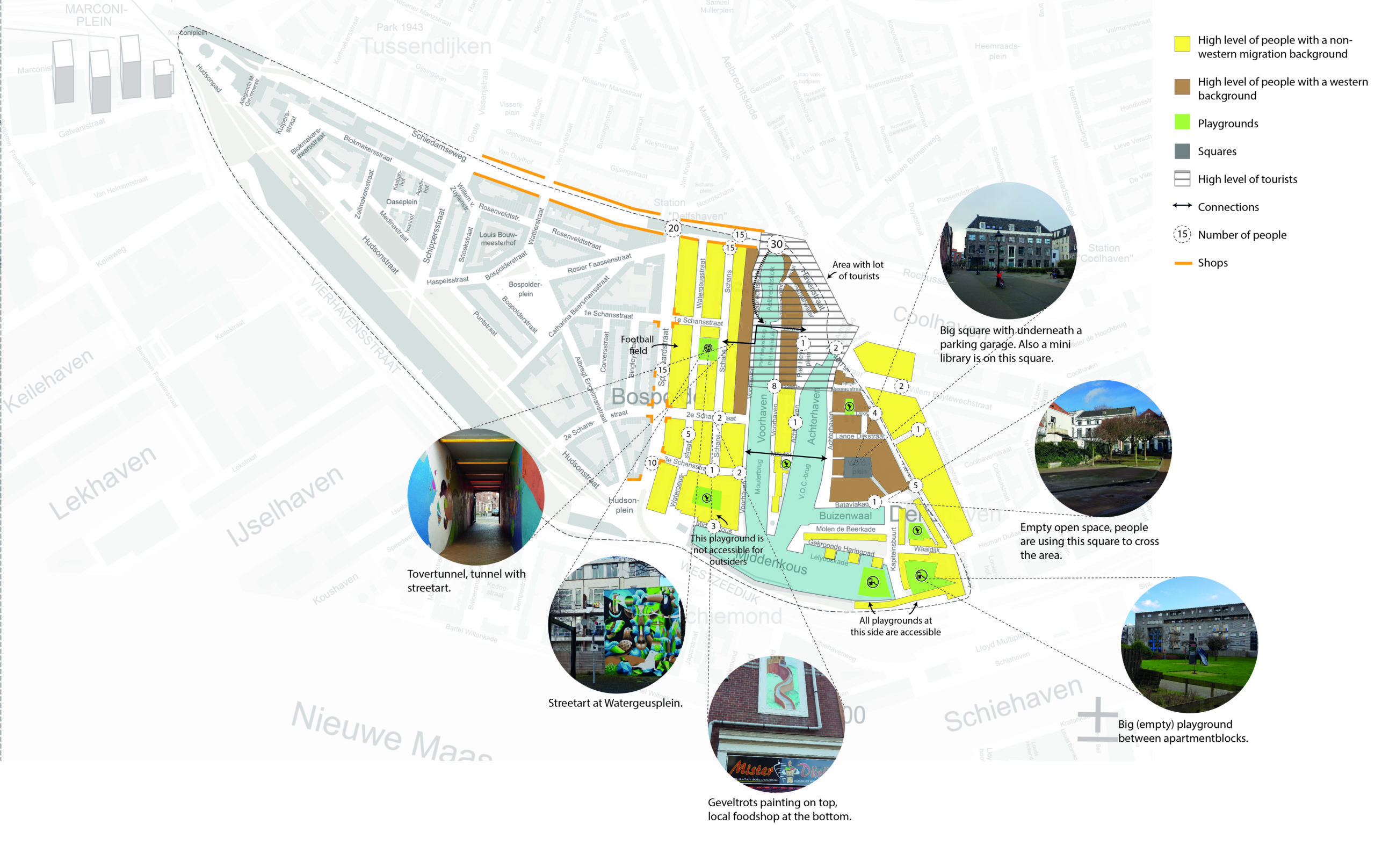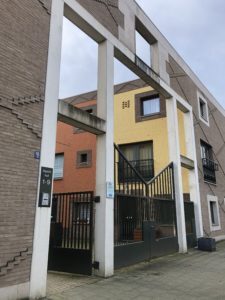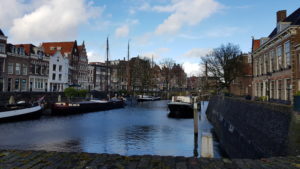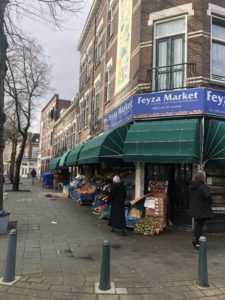Introduction
Urban art plays an important role in creating the identity of a neighborhood by bringing opportunities for new experiences. The inspiration for our research themes, Identity & Connection, was the new residential community: Le Medi. The style of this neighbourhood stands symbol for the integration of multicultural residents and lifestyles. This has brought us to the following research question:
This has brought us to the following research question:
“To what extent do inhabitants identify themselves with the neighborhood in relation to Urban Art, Objects and Squares?”
Our main focus area is Bospolder, but we will also research Delfshaven to make a comparison with. The two neighbourhoods are a complete opposite of each other. Delfshaven is a historical old harbour with characteristic buildings and mainly western inhabitants and tourists, whereas Bospolder is a pre-war residential area with mainly inhabitants that have a non-western migration background.
Research methology
Both quantitative and qualitative data were used to formulate research themes and research questions, to set a research scope, and to draw conclusions based on those findings. We started with a desk research, followed by fieldwork consisting of observations and interviews to verify our findings. Additionally, we analysed this data with a summary that is put together in an anchor point map. Lastly, we answered the research questions and draw conclusions out of our findings.
Research outputs
We started our research with a first visit into both neighbourhoods. Our aim of this visit was to gather insights for interesting aspects to elaborate more on. As we already mentioned, Le Medi was the starting point of our research. It inspired us to do more research on subjects like people, physical objects/spaces, and feelings. We observed many different (urban) art interventions, like Geveltrots, the Tovertunnel, street art, and the Fox. Also historical Delfshaven was an interesting area to observe.
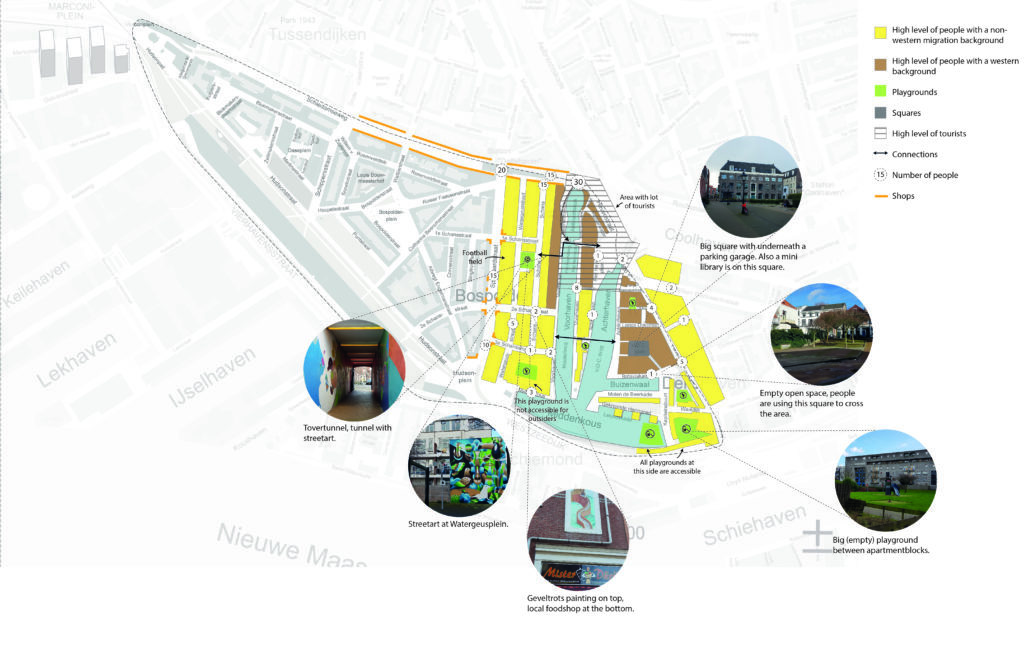
We were interested in the opinion of residents and visitors about these interventions, therefore we conducted street interviews to ask their feeling about it. Furthermore, we interviewed some artists of these interventions why they had made these creations.
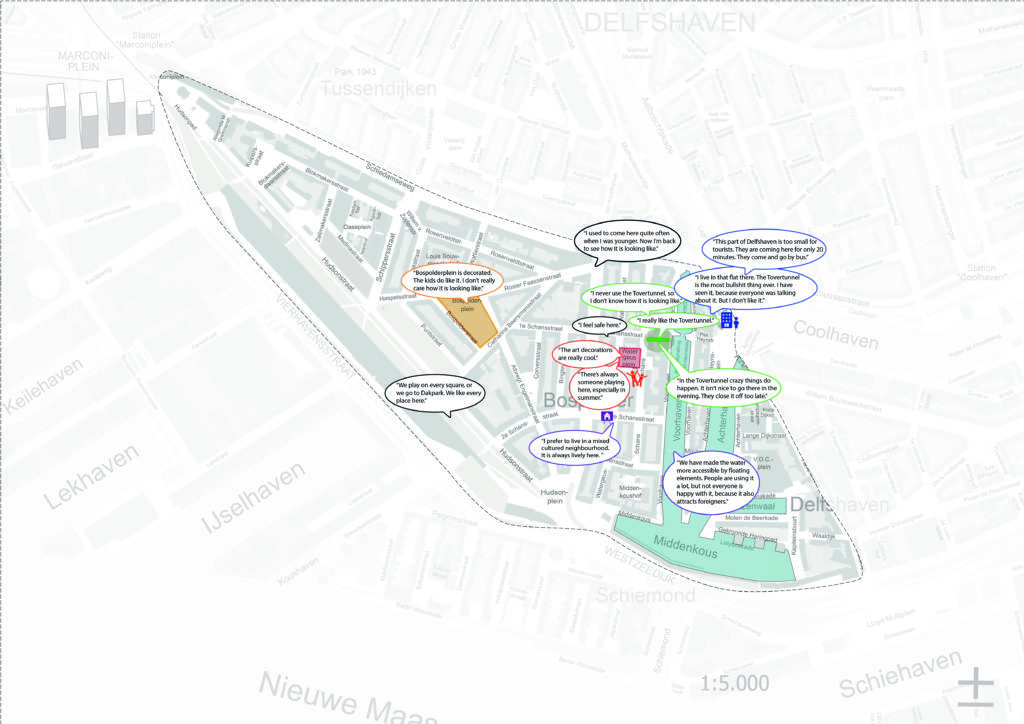
Conclusions
We summarized and analyzed all our findings together in an anchor point map. This have helped us to formulate a final answer on our research question:
“To what extent do inhabitants identify themselves with the neighborhood in relation to Urban Art, Objects and Squares?”
There are two different ways how inhabitants identify themself with the neighbourhood; city district scale and neighbourhood scale interventions. City district scale interventions (e.g. objects and (urban) art) are important to the west of Rotterdam (‘West-side’) and neighbourhood interventions (e.g. objects and squares) are important to specific parts of Bospolder and Delfshaven. The interventions we have observed, can be categorised as follows:
City district interventions:
- ‘De Tovertunnel’ designed and created by Willij van der Linden
- The Fox designed by Florentijn Hofman (in progress)
- Historical Delfshaven (e.g. windmill, old bridges, characteristic buildings)
- playscapes by Arttenders (in progress)
Neighbourhood interventions:
- Bospolderplein (playground)
- Watergeusplein (playground)
- V.O.C. plein (square with mini library)
- 2e Schansstraat (Geveltrots)
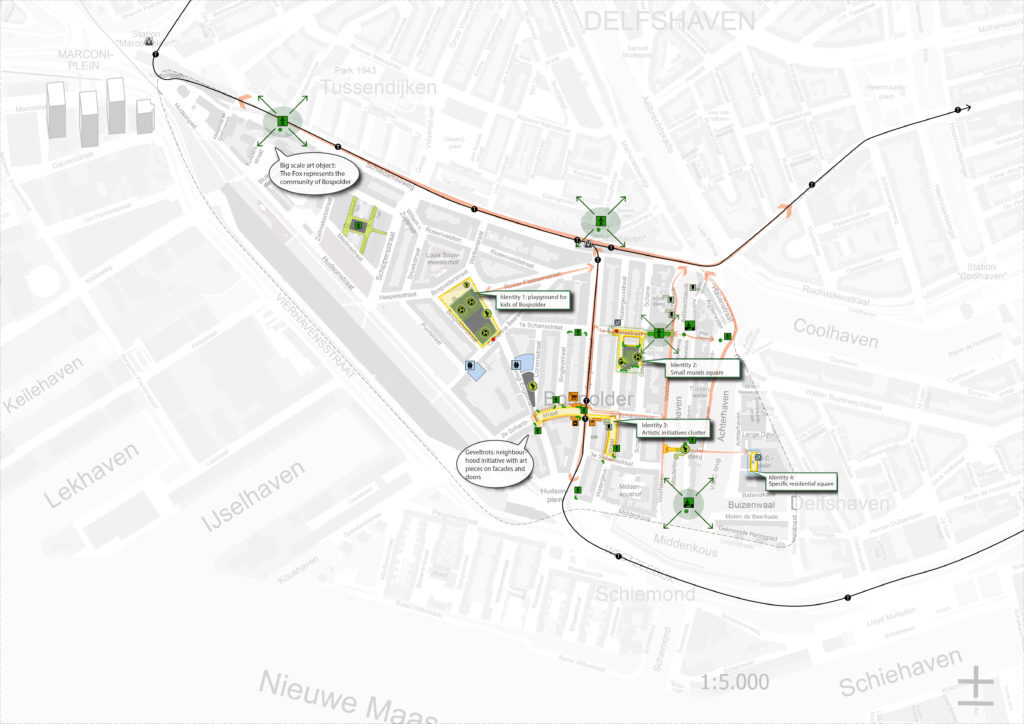
Almost all inhabitants in our research area feel connected to the bigger city district scale interventions, but the opinions about these interventions are divided. Mainly residents of Bospolder were highly positive about these interventions, whereas residents of Delfshaven were neutral or negative.
On neighbourhood scale, inhabitants close by these interventions do feel connected to it and they are happy that they have their ‘own place’. They recognize these interventions as their neighbourhood where they are living in.
